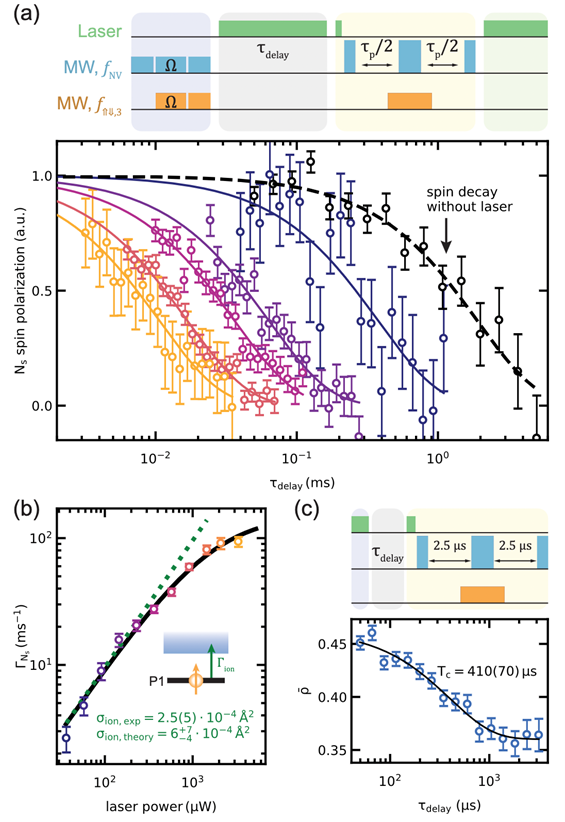Dopants in semiconductors are a key part of modern technology and emerging quantum applications. In tradition semiconductor devices, a high density of dopants enables current flow and logic operations. Many electronics dopants also carry spin, and controlled doping of materials such as diamond, with deep-level defects, has led to the coherent manipulation of spin states in optically active electronic defects. These color centers may interact with nearby optically inactive (dark) spins, which generally cause central spins to decohere, but may also be leveraged to advance quantum sensing and quantum memories. Controlling color centers requires optical illumination, which may drive the electronic environment out of equilibrium, leading to dynamic processes such as ionization. A better understanding of the coupling between charge and spin degrees of freedom in semiconductors at the single-defect level is necessary for the development of quantum technologies based on solid state spin systems.
In this work we develop a spin probe of the charge dynamics of single nitrogen centers (Ns) in diamond, measuring charge state multiplicity as well as non-equilibrium dynamics through resonant detection of the associated spin polarization with a nearby nitrogen vacancy (NV) color center. The NV and Ns centers are hosted in a thin nitrogen 𝛿-doped region of isotopically purified diamond. We first perform spectroscopy of the NV center’s environment with narrow-band magnetic resonance. We identify nine separate energy levels corresponding to dipolar (magnetic) couplings and Stark (electric) shifts arising from two nearby Ns centers occupying either the spin-1/2 neutrally charged state or the spin-0 positively charged state. This provides evidence that each particle spends time in both charge states. Along with NV coherence measurements, we extract populations of less than 50% for each Ns center in the neutral charge state, and can independently measure both the dipolar couplings and Stark shifts arising from each defect.

We then implement a spin pump-probe method to (i) spin-polarize the Ns center with the NV center spin and (ii) measure the Ns polarization with a polarization-sensitive NV coherence measurement. First a Hartmann-Hahn resonant drive coherently transfers polarization from the optically polarized NV center to the target Ns spin (in a thermal state), followed by a period of free or driven evolution of the Ns center. Then a double electron-electron resonance (DEER) measurement of the two spin system imprints the Ns spin polarization onto the NV spin coherence. We find a correspondence between the transferred polarization out of the NV and the signal we later measure, indicating that the pump-probe measurement works.

We then apply this method to study non-equilibrium charge dynamics, namely the ionization of the Ns center under illumination. We first measure the Ns spin relaxation in the dark, finding a T1 time of around 2ms, commensurate with prior bulk measurements, although here we measure a single spin. Under illumination with 532nm light—energetic enough to ionize the charge—we find increasingly fast relaxation of the spin polarization, effectively measuring a fast process (ionization) through a steady-state spin state. Mapping the decay rate versus laser power, we extract an ionization cross section that matches first principles DFT calculations. We also find unexpectedly that the Ns spin polarization is long-lived under illumination, decaying only when accompanying charge is ionized, a previously unobserved effect. We finally measure the decay of the charge state in the dark, finding a slow post-ionization decay over hundreds of µs.

Our results suggest new avenues in quantum sensing and the development of new qubit host materials. Additionally, the demonstrated spin probe of charge behavior may be applied to study noise sources on the diamond surface, which can arise from coupled charge and spin dynamics and are limiting for NV center sensing applications.
Details can be found in our manuscript:
J. C. Marks, et. al., arXiv (2023).